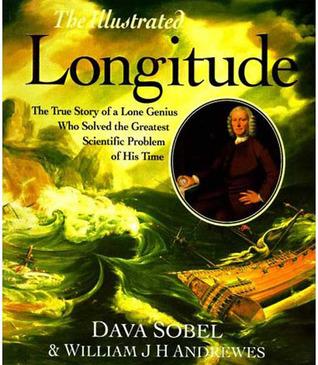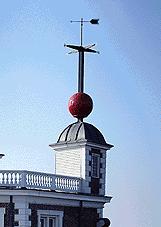 Welcome to British Isles Friday! British Isles Friday is a weekly event for sharing all things British — reviews, photos, opinions, trip reports, guides, links, resources, personal stories, interviews, and research posts. Join us each Friday to link your British-themed content and to see what others have to share. The link list is at the bottom of this post. Lift a pint and join our link party!
Welcome to British Isles Friday! British Isles Friday is a weekly event for sharing all things British — reviews, photos, opinions, trip reports, guides, links, resources, personal stories, interviews, and research posts. Join us each Friday to link your British-themed content and to see what others have to share. The link list is at the bottom of this post. Lift a pint and join our link party!
Last week’s British Isles Friday posts included travel pieces, book reviews, and Tanya’s photo-essay on Wigtown, Scotland’s book town, on 52 Books or Bust.
My post this week reviews The Illustrated Longitude, a book that has influenced the itinerary of our upcoming trip to London.
Book: The Illustrated Longitude: The True Story of a Lone Genius Who Solved the Greatest Scientific Problem of His Time by Dava Sobel and William J.H. Andrewes
Genre: History
Publisher: Walker and Company
Publication date: 1998
Pages: 210
Source: Purchased

This book added several items to our London Itinerary.
Summary: Detecting latitude (how far north or south you are) is fairly easy. Longitude (location east or west), however, especially on a rolling sea, is quite difficult to calculate. As Britain was stretching itself into empire in the 1600s and 1700s, the longitude problem became a national and international obsession among scientists of the age. A solution was deemed so important that the British Parliament passed the Longitude Act of 1714 offering a prize of the equivalent of several million dollars for a solution.
The smart money was placed on an astronomical solution, reading one’s position on earth in relation to the positions of the stars and planets and their moons. But this required precise instruments, advanced calculations, and tables of data that were not yet fully compiled.
John Harrison, a clockmaker, believed in a different solution. If a sailor knows the time at his present location (easily enough determined at noon) and the time at a fixed location (say, Greenwich), the longitude is a simple calculation. Here’s the problem, though, as stated by Isaac Newton:
“One [method] is by a Watch to keep time exactly. But, by reason of the motion of the Ship, the Variation of Heat and Cold, Wet and Dry, and the difference of Gravity in diferent Latitudes, such a watch hath not yet been made.” And not likely to be, either, he implied. (p. 64)
Thoughts: Rick read Longitude several years ago, checking out the original edition from the library. Walking in the footsteps of John Harrison is his primary reason for taking a trip to England. Given that, I wanted to read Longitude, too, and make sure that I was planning enough activities in our itinerary to meet the expectations that this book invoked. So, we bought the illustrated edition of Longitude to add to our library.
Even after hearing Rick talk about the book and watching the made-for-TV film based on the book, I was still stunned when we got to Harrison’s 4th timekeeper. I’m so impressed by the structure of this book that I had an emotional reaction to a story where I already knew the broad outline.
 One of the reasons we committed to a trip this fall was to see the special Longitude exhibit, marking the 300th anniversary of the Longitude Act of 1714, at the National Maritime Museum in Greenwich. According to Longitude, the National Maritime Museum is the home to Harrison’s first four models of marine timekeepers. I’m not sure how this new exhibit effects their display, but I’m sure we’ll get to see them.
One of the reasons we committed to a trip this fall was to see the special Longitude exhibit, marking the 300th anniversary of the Longitude Act of 1714, at the National Maritime Museum in Greenwich. According to Longitude, the National Maritime Museum is the home to Harrison’s first four models of marine timekeepers. I’m not sure how this new exhibit effects their display, but I’m sure we’ll get to see them.
I recently discovered that we’ll be in London in time to hear a public lecture at the Maritime museum, cosponsored by The Royal Society. The conversation will feature the exhibit’s curator and the current Astronomer Royal. How geeky are we that we’re more giddy about attending this event than we would be if we were invited to tea with the Queen?

The red ball falls at precisely 13:00.
While we’re in Greenwich, of course, we’ll want to straddle the prime meridian — both the one marked on pavement and the one that shows up on GPS (we’ve heard that they don’t quite match). We’ll also want to catch the dropping of The Greenwich Time Ball at precisely 1pm. Since 1833, this has been used as a way to synchronize clocks and watches for ships on the Thames and people in London. And, we’ll want to visit the portrait of John Harrison hanging in the gallery at the Old Royal Observatory.
For a truly off-the-beaten-track item on our itinerary, we’ll visit The Worshipful Company of Clockmaker’s museum at the Guildhall Library in London. This is the home of Harrison’s 5th iteration of his marine timekeepers along with many other watches, clocks, and related documents in the history of timekeeping.
Appeal: The Illustrated Longitude is a delight for lovers of history, especially the history of science, engineering, and marine travel.
 Challenges: Two of my 2014 reading challenges will count The Illustrated Longitude — it’s my 6th book for the British History Reading Challenge and my 14th book for the Nonfiction Reading Challenge. I’ll also link this review to Doing Dewey‘s Non-Fiction Friday meme.
Challenges: Two of my 2014 reading challenges will count The Illustrated Longitude — it’s my 6th book for the British History Reading Challenge and my 14th book for the Nonfiction Reading Challenge. I’ll also link this review to Doing Dewey‘s Non-Fiction Friday meme.
Reviews: Seth at Collateral Bloggage also enjoy the story-telling in Longitude. Debbie at Different Time, Different Place Book Reviews read the original edition of Longitude and wished for pictures — she would like the version that I read. The review of Longitude at One Librarian’s Book Reviews appreciated the humor and that you don’t have to be a scientist to enjoy the book.
What books have informed your travel dreams?

